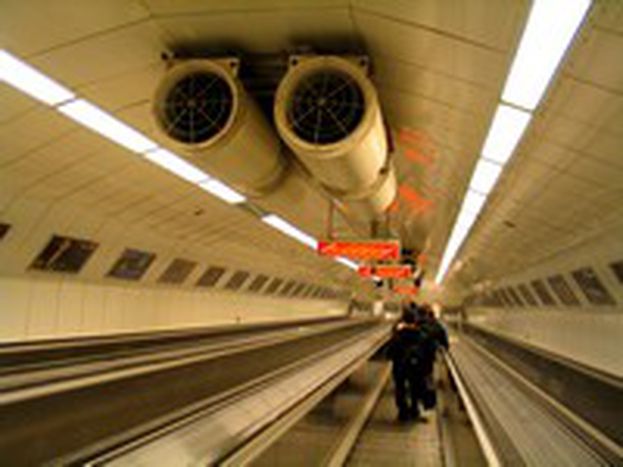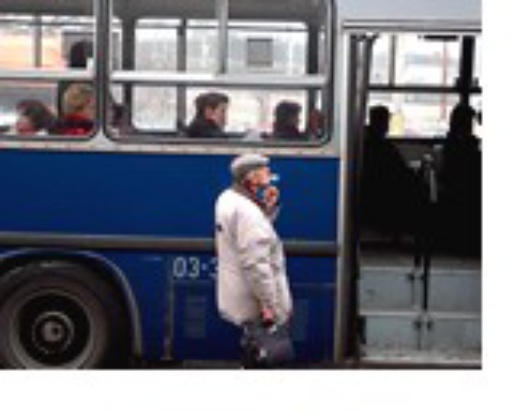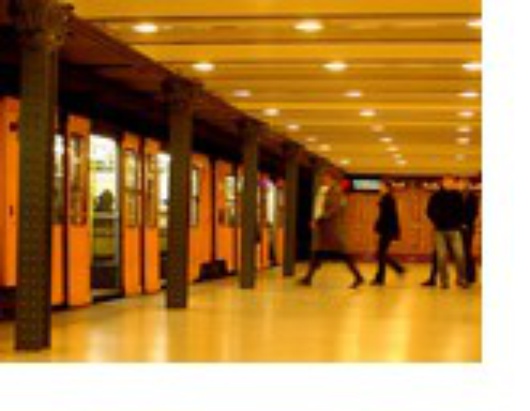
Digging deeper on line M4 in Budapest's metro
Published on
In 1896, Budapest welcomed the first metro line on the European mainland. Well over a century later, and the Hungarian capital’s public transport network desperately needs upgrading.
Stroll down the famous Andrássy Avenue in downtown Budapest, and you’ll immediately be struck by the tone of classic grandeur, which is rather strangely complemented by the thick layers of dirt lacing the buildings, caused by exhaust fumes.
In recent years, the Hungarian capital has been confronted with an exploding influx of cars. Every day during peak time, its avenues and boulevards are disguised with vast traffic jams. ‘The living standard rose after the ‘changes’. The number of cars purchased rocketed,’ explains István Erdélyi, head of the traffic survey department of BKV Ltd, the municipally owned company that manages public transport in Budapest. The ‘change’ Erdélyi refers to is the collapse of Hungarian communism in 1989.
Show me the money
Obviously, the problems resulting from the massive increase in cars need to be addressed. Apart from blackening architecture, an efficient transportation route through the city is becoming unimaginable. Air pollution is rising. Invest in public transport, maybe?
 Budapest already boasts a sizeable public transport network. Buses, trolleybuses, trams and suburban trains all play their roles on the jigsaw. There is even a cogwheel and a funicular railway. Underground, three metro lines operate. Amongst them is the ‘Millenium’ subway line, which itself opened in 1896.
Budapest already boasts a sizeable public transport network. Buses, trolleybuses, trams and suburban trains all play their roles on the jigsaw. There is even a cogwheel and a funicular railway. Underground, three metro lines operate. Amongst them is the ‘Millenium’ subway line, which itself opened in 1896.
BKV acknowledges that the public transport network isn’t expanding fast enough, despite the modern trams, a refurbished Metro II, and bicycle tracks. Erdélyi sees these developments as ‘small improvements.’
Metro the fourth
There is one ambitious project that might bring the desired improvements; the ongoing construction of a fourth metro line. ‘It will connect the inner city to the south west, where most of the increasing car pressure comes from’, says colleague László Gulyás. The project manager handles a 1.2 billion euro budget and deals with American, French, German, Japanese and Swiss contractors.
‘Construction started in March 2006,’ Gulyás continues. ‘But we have been preparing for this since 1996.’ Think that’s long? The first plans for a new metro line stem from 1972. Gulyás explains the endless delay, caused by the socialist regime. ‘It was very slowly succumbing to political infighting and a lack of money from the early seventies onwards. After 1989, another change of government in 1998 further delayed the project.’
 But it finally got started. Financing is provided by the European Investment Bank (EIB), from which the Hungarian government and the Budapest municipality loaned three quarters of the project costs. In the coming months, Gulyás will also apply for EU funding – Hungary joined the union on May 1, 2004. He is hopeful: ‘We will ask for between 50 and 75 percent of project costs. It’s a sum that would enable us to improve a lot, like surface reconstruction, which for the time being is insufficient.’
But it finally got started. Financing is provided by the European Investment Bank (EIB), from which the Hungarian government and the Budapest municipality loaned three quarters of the project costs. In the coming months, Gulyás will also apply for EU funding – Hungary joined the union on May 1, 2004. He is hopeful: ‘We will ask for between 50 and 75 percent of project costs. It’s a sum that would enable us to improve a lot, like surface reconstruction, which for the time being is insufficient.’
The 'surface reconstruction' that Gulyás refers to is that of the expensive work that needs to be done after the metro stations have been built. Two tunnels for Metro 4 will be dug next to each other by a giant 'wormlike' machine. It’s round 'mouth' has a diameter of 6 meters, and can grind even the hardest stone to dust. This 106 meter-long machine, operated by people inside it, digs its way through the ground, leaving behind a tunnel – and extensive damage. Buildings, streets and squares will be affected right in the heart of downtown Budapest.
Political infighting first, public interests last
But Gulyás stresses the importance of his project. ‘Budapest needs this. Two and a half million people use public transport daily. Metro 4 will increase capacity by 400, 000.’ He dismisses civil rights groups protests, such as the claim that cheaper alternatives could be developed overground. ‘Where?,’ he asks, exasperated. ‘There is simply no more road surface. We are talking about the inner city of Budapest. We don’t want to demolish any houses or historical monuments.’
Metro 4’s first trip was sketched in for December 2009. ‘But there is already at least one month’s delay,’ Gulyás admits. Erdélyi is pessimistic about the project, and indeed about the development of public transport in general. BKV rose from 30, 000 employees in 1990 to 12, 000 today, and tries hard to be an efficient company.
But Erdélyi maintains that, ‘political influence on BKV and other companies remains too high in Hungary. In happier countries, professionals have the major say. Here, politicians often do.’ And Hungarian politics isn’t exactly running smoothly. Erdélyi gives an example: ‘Three months after the municipal elections, and only one of the three deputy mayors of Budapest has been elected. With such political infighting, public interests come second. Or even third or fourth.’
Even though plans for a fifth metro line – a connection between two existing suburban railway lines - already exist, Budapest’s buildings look due to turn a darker shade of black in the foreseeable future.



